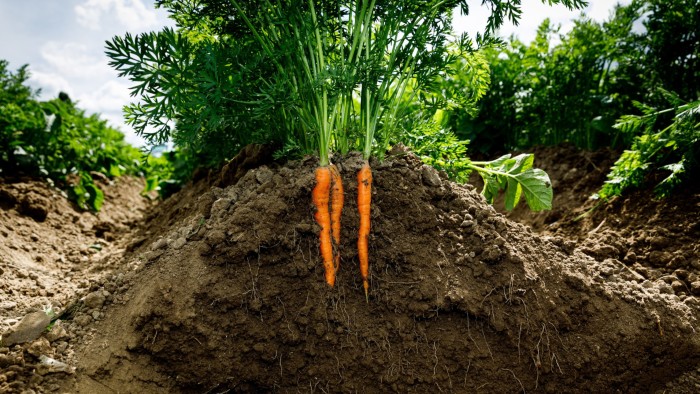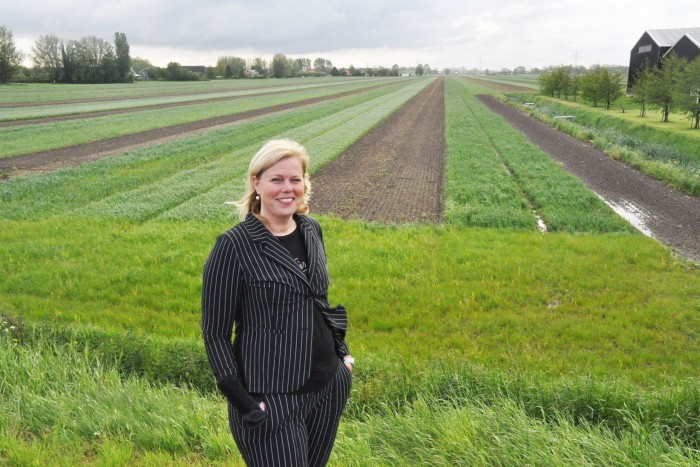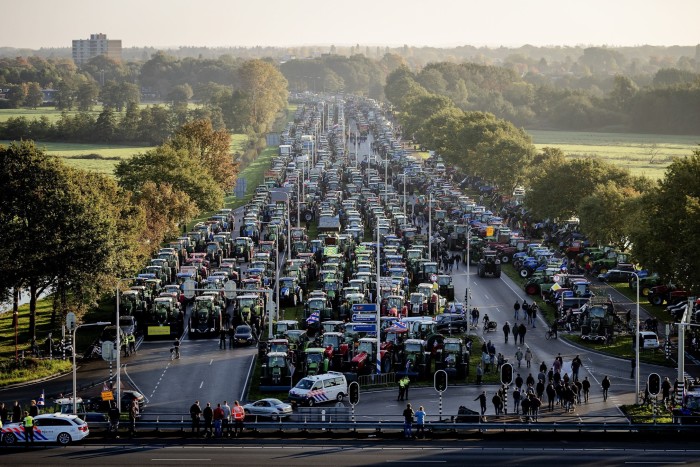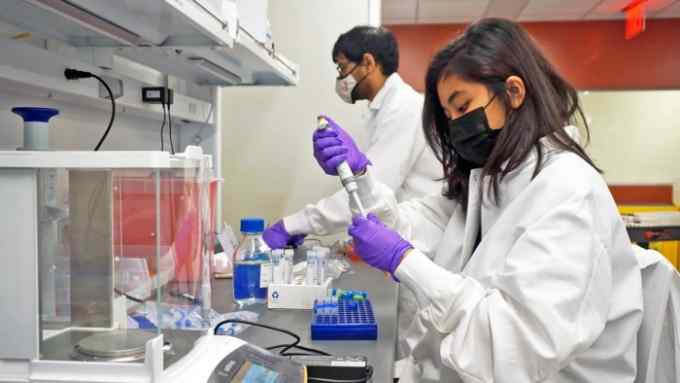EU faces criticism over plans for healthier soil

Roula Khalaf, Editor of the FT, selects her favourite stories in this weekly newsletter.
You can learn a lot about soil health from watching how a cow defecates. That is the conclusion of Mellany Klompe, a Dutch farmer who, with her husband Jeroen, took the decision in 2013 to switch gradually from conventional farming methods to more sustainable practices.
In the Netherlands, injecting manure into the soil is standard practice, Klompe says. “But, looking at nature, you don’t see a cow dig a hole, poop, and then close again. The manure needs to be on top of the soil — otherwise, concentrations [of it] are too high.”
Spreading solid manure on the surface is just one of the many ways that Klompe has changed practices on the family farm near Rotterdam to attend as much to the environment as to yields.
But, although the health of the soil has improved, the level of investment has been high. Dutch farmers are paid by the government to inject liquid slurry into their fields, a subsidy that Klompe now forgoes. Instead, she pays for solid manure to apply to the soil surface, which costs more. “It’s a big investment in soil life,” Klompe says.

Incentivising farmers to take on more sustainable practices — known by the broad term “regenerative farming” — has become a key concern for policymakers as they try to tackle a sector that produces around a quarter of global greenhouse gas emissions.
Modern farming is a lean industry that prioritises high yields at low margins, leaving little incentive for farm owners to take on costly regenerative methods.
In its 2022 report, the Intergovernmental Panel on Climate Change noted: “The mitigation of agricultural [methane and nitrous oxide] emissions is still constrained by cost, the diversity and complexity of agricultural systems, and by increasing demands to raise agricultural yields.”
However, policymakers hope that better soil health — also achieved by sowing cover crops in the off season and no longer ploughing fields — will not only mean that farmers are less affected by droughts but also that more carbon is sequestered in the earth. That will allow farm owners to generate revenues by selling carbon removal certificates.
In the EU, two parallel pieces of legislation — one establishing rules for monitoring soils and another governing carbon removals — are under negotiation as part of the bloc’s Green Deal climate law that sets an EU-wide target of reaching net zero emissions by 2050.
Both pieces of legislation have been criticised by campaigners for being too loose, though. “Despite the great announcements of the European Commission, as it stands, the proposal is very weak,” says Andrea Beste, scientific adviser to the German Green MEP Martin Häusling. “It does not contain any targets or obligations to prepare plans. It contains very little about soil biodiversity and no clear mechanisms related to the ‘polluter pays’ principle.”
Elisabet Nadeu, an expert on EU farming policy at the Institute for European Environmental Policy, points out that more than 60 per cent of the EU’s agricultural soils are considered unhealthy, which demands “serious action”. But she echoes Beste’s concerns over the proposals, adding that they “will only effectively start being implemented towards the end of this decade, when soil degradation is likely to have worsened and we are likely to face more extreme [weather] events with significant impacts on soils”.
Among the reasons for the weaker requirements is a fear of backlash from the agricultural community when it comes to EU elections next year. Conservative lawmakers put up a ferocious political fight against targets to restore the EU’s ecosystems in June, claiming that they would cut agricultural yields at a time when food security is fragile because of the war in Ukraine. A radical farmer movement in the Netherlands won a landslide in local elections in March thanks to vocal opposition to nitrogen emission rules.

Martin Hojsík, a Slovak lawmaker who is leading negotiations on the law for the European parliament, says he fears the debate over soils “may get political because elections are coming and that has that effect”. Stringent targets for soil health would be impossible, he adds. “We cannot say everyone should have 50 per cent [healthy soils]. It should be regional.”
Environmental bodies fear that, while carbon sequestration could be a way to incentivise farmers to take action on their soils, the framework proposal for certificates in the EU could lack the robustness required.
“The commission needs to ensure that the removals it certifies are permanent, can be measured, reported and verified effectively, and that the actions taken do not have adverse environmental impacts,” Nadeu says.
Farmers are also sceptical that carbon removals will provide the revenue stream they need, in a world where food price inflation is high and retailers are trying to maintain rock-bottom prices.
Christiane Lambert, president of the European farming sector body Copa, says: “We are monitoring developments in carbon markets.” But she adds that the proposals put forward by the commission affecting farmers are “disconnected from the reality of agricultural life”. On soils, for example, she says it is “complicated to keep checking on soil health . . . no one knows who will pay”.
Klompe says she is not involved in carbon-removal schemes, as they tend to lock farmers into contracts that prevent them selling their produce on the free market. Instead, the Klompes have focused on establishing a foundation to educate other farmers, who initially called them “crazy” but are visiting the Klompes’ farm with renewed interest in the wake of extreme weather events.
However, the economics are still a challenge, particularly as achieving even higher yields through regenerative practices is “not possible”, Klompe says.
For Klompe and her husband, the incentive is a long-term one: the realisation that the farm’s fields were becoming so quickly depleted of crucial nutrients that they soon would not be healthy enough to pass on to the children. “We acknowledged we were the generation that needs to invest,” she says.
Climate Capital

Where climate change meets business, markets and politics. Explore the FT’s coverage here.
Are you curious about the FT’s environmental sustainability commitments? Find out more about our science-based targets here

Comments